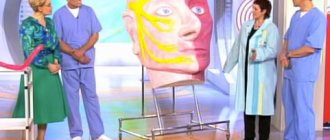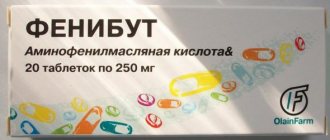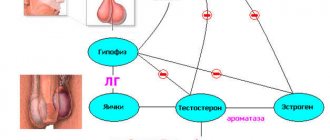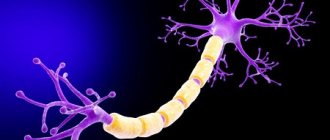After all, azafen is a potent antidepressant.
First, you need to remember that azaphene is a potent, long-acting tricyclic antidepressant.
The specificity of antidepressants is that they have a cumulative effect. This means: the drug must be taken for a long time, several times a day, as part of a single course of treatment.
The persistent effect of antidepressants, manifested in stabilizing the patient’s mood, leveling the general emotional background, suppressing negative thoughts and experiences, is noted after two weeks of regular use, according to the regimen prescribed by a psychiatrist. In order to relieve and stop a current panic attack, it is useless to drink azafen. Moreover, it can be harmful. It is likely that panic will only intensify, since an antidepressant is not the “key” that can open and pacify its self-winding mechanism.
SIDE EFFECTS OF TRANQUILIZERS
(ANTI ANXIETY DRUGS).
Development of addiction and formation of drug dependence
Signs: the first sign of addiction to the drug is the desire to increase the dose of the drug used, since the previous amount of the drug ceases to give the desired effect and no longer relieves unpleasant symptoms. Subsequently, the dependence manifests itself in the inability to “get off” the drug: when trying to stop the drug, a “withdrawal syndrome” occurs: anxiety, low mood, irritability, heaviness in the head, insomnia, severe weakness, loss of appetite, tremors in the hands, palpitations, increased blood pressure . Leg cramps and even grand mal seizures and daytime urinary incontinence may occur.
Drugs that cause addiction and dependence:
Most often: Relanium (Seduxen, Sibazon), lorazepam (Lorafen), alprazolam
Reliably less common: Elenium, clonazepam, tazepam (nozepam)
What to do if you become addicted to the drug? It is very difficult to stop taking a tranquilizer on your own if you have developed an addiction due to the duration of the “withdrawal syndrome” (about three weeks), the gradual increase in symptoms by the end of the first week of abstinence, and the possible development of dangerous complications (epileptic seizures). It is most advisable to reduce the dose of the drug very slowly under the supervision of a doctor who, in addition to observation, will be able to select therapy aimed at accelerating the elimination of the drug from the body and relieving unpleasant and painful symptoms.
Attention! Signs of the formation of drug dependence appear within 1 - 1.5 months after starting to take the above drugs (especially Relanium, Lorafen and Alprazolam). Most often, dependence on tranquilizers occurs during self-medication, so it is strongly NOT recommended to prescribe these drugs to yourself without the participation of a doctor.
Deterioration of memory and attention, impaired coordination of movements, increased effects of alcohol
Signs: These side effects are united by the concept of “behavioral toxicity” of tranquilizers. A person feels less efficient, it is difficult for him to concentrate for a long time, it is difficult for him to think quickly and find answers in a conversation, he may immediately forget the facts that are told to him. There is a feeling of insufficient “inclusion” in the situation. There may be motor clumsiness and lack of coordination of movements.
Drugs that most often cause such symptoms: diazepam, clonazepam, lorazepam, nitrazepam, phenazepam, elenium (Librium), estazolam
Attention! Alcohol intake is prohibited during the treatment period. You should refrain from activities related to operating machinery and vehicles.
Excessive sedation
Signs: drowsiness, lethargy, difficulty waking up in the morning.
Drugs that most often cause these symptoms: flunitrazepam (Rohypnol), nitrazepam (radedorm), clonazepam, phenazepam, lorazepam, diazepam (Relanium, Seduxen)
Muscle relaxation
Signs: general weakness, or weakness in certain muscle groups (for example, in the arms), relaxation in the body, reluctance to move again.
Drugs that most often cause these symptoms: diazepam (Relanium, Seduxen), clonazepam, phenazepam, nitrazepam, lorazepam
Paradoxical reactions
Signs: instead of calming and relieving anxiety, opposite reactions to taking a tranquilizer may occur: increased anxiety, motor restlessness, fussiness, irritability and even aggression. Such reactions are rare and depend on the individual characteristics of the patient’s body.
“Paradoxical” reactions have not yet found definitive confirmation of their connection with the use of certain tranquilizers. However, there is evidence that triazolam, for example, quite often contributes to the appearance of pronounced aggressive behavior. In isolated cases, paradoxical reactions in the form of anxiety and sleep disturbances were noted in patients taking buspirone.
Drugs that do not cause excessive sedation, muscle relaxation and impairment of memory and attention: oxazepam (tazepam, nozepam), grandaxin, stresam, buspirone, atarax, afobazole, mezapam (rudotel), clorazepate.
If you are taking mood stabilizers (mood correctors)
Mood correctors
– drugs that have the ability to influence both pathologically depressed and pathologically elevated mood. The ability to regulate mood is manifested in the elimination of severe affective disorders, and then in the stabilization of mood at a certain average level. Thus, the main indication for prescribing mood stabilizers is the presence of depressive and manic attacks that recur quite often.
Most mood correctors (except lithium) are also anticonvulsants used in the treatment of epilepsy.
In addition, mood stabilizers are successfully used in the treatment of:
- personality disorders accompanied by explosiveness, conflict, irritability, aggression
— depression in patients with alcoholism
- migraine
Normotimics include:
- lithium salts (preparations sedalit, micalit, litosan, contemnol, quilonum retard)
- valproic acid (drugs Depakine, Konvulex, Encorate, Apilepsin, Konvulsofin, Dipromal, Orphyril, Everiden)
- carbamazepine (synonyms: finlepsin, tegretol, actinerval, gene-karpaz, zagretol, zeptol, carbadak, carbalepsin, carbapin, karbasan, carbatol, carzepin-200, mazepin, novo-carbamaz, stazepin, storilat, timonil, finzepin, epial)
SIDE EFFECTS OF NORMOTIMICS.
Side effects of lithium drugs (sedalite, micalite, litosan, etc.)
At the initial stage of preventive therapy with lithium salts, mild side effects may appear in the form of increased fatigue, disorders of the digestive system (nausea, vomiting, diarrhea), and occasional mild hand tremors. At acceptable concentrations of lithium in the blood (within 0.5 - 0.8 mEq/L), these phenomena do not require a dose reduction and usually disappear as the body adapts to the drug.
With a relative duration of treatment (over several months and years), the following may appear:
- diffuse enlargement of the thyroid gland
- noticeable weight gain
- minor swelling
- temporary deterioration in vision clarity.
In these cases, it is sometimes necessary to slightly reduce the dose or switch from using a long-acting (long-acting) drug to taking short-acting drugs in the same dose 2-3 times a day.
The main complication that can occur with long-term use of lithium drugs is intoxication with lithium salts.
Early signs of lithium overdose: increased thirst and trembling fingers. Then lethargy, weakness, and drowsiness appear. Then vomiting and diarrhea occur, swelling increases, speech difficulties and heart rhythm disturbances appear.
At the first signs of intoxication, you must immediately stop taking the drug and consult a psychiatrist, who will prescribe treatment aimed at accelerating the elimination of lithium from the body and relieving symptoms of intoxication.
Provoking factors that increase the concentration of lithium in the blood: a diet with limited salt and liquid, combination with indomethacin, some antibiotics (ampicillin, tetracycline)
Attention! Treatment with lithium preparations is carried out with regular monitoring of the concentration of lithium in the blood plasma:
- in the acute period (treatment aimed at “breaking off” a painful attack): the concentration of lithium in the blood is monitored daily, and it should not exceed 1.2 - 1.4 meq/l
- selection of a daily dose for prophylactic use (treatment is aimed at preventing repeated attacks of depression or manic states) requires determining the concentration of lithium in the blood, first once a week during the first month, then 1 - 2 times a month, after 7 months of therapy - once at 3 – 4 months. The lithium concentration that provides a preventive effect should be in the range of 0.5 – 0.8 mEq/L
Side effects of valproic acid drugs (convulex, depakine, encorate, etc.)
The most common side effects of valproic acid therapy are gastrointestinal disorders: nausea, diarrhea, loss of appetite.
Possible excessive sedative effect in the form of drowsiness, slowing down of thought processes.
Also possible: tremor (shaking of hands), loss of coordination of movements.
When using long-acting drugs used once a day (for example, Depakine Chrono), side effects occur more often, it is possible that appetite may increase rather than decrease, and hair loss is sometimes observed.
To prevent these phenomena, it is advisable to combine valproic acid with a daily intake of multivitamins with a set of microelements, including, in particular, selenium and zinc.
Side effects of carbamazepine (finlepsin, tegretol)
When carrying out carbamazepine therapy, side effects are expressed in headaches, dizziness, loss of coordination of movements, drowsiness, dermatitis or skin itching, sometimes double vision, blurred vision.
As with other mood stabilizers, side effects such as nausea and vomiting are possible.
However, in most cases, carbamazepine is well tolerated, even with long-term use.
If you take nootropics (meals that improve nutrition and brain function)
Nootropics
– medications that stimulate mental activity, improve memory, and accelerate learning processes.
Application: decreased general activity, asthenic conditions of various origins, brain lesions (vascular, traumatic, alcoholic, infectious), conditions after strokes, coma, dementia, in pediatric practice: with intellectual disability, developmental delay, attention deficit hyperactivity disorder (ADHD) ), tics, enuresis.
Noothorps are always used in the treatment of alcoholism.
Effects of nootropics (present in different drugs in different amounts):
— Psychostimulating (increasing the activity of the sphere of impulses) – used in states of decreased activity, inactivity and apathy, intellectual inhibition
— Antiasthenic (reduction of weakness, increased physical and mental exhaustion)
— Increasing the level of wakefulness of consciousness - used in states of depressed or darkened consciousness
— Adaptogenic – increasing the resistance of the body and psyche to various harmful environmental factors, including intoxications
— Nootropic (strengthening the functions of thinking, memory)
— Antiepileptic (for some drugs)
— Antiparkinsonian (used not only for Parkinson’s disease, but also to relieve the unpleasant side effects of antipsychotic therapy - see above)
— Vegetotropic (stabilization of the autonomic nervous system)
Table of synonyms for nootropic drugs.
| International name of the drug | Names of this drug that are found in pharmacies (the most commonly found dosage forms in pharmacy chains are highlighted) |
| Drugs with a predominant stimulating, activating effect (cannot be taken at night as it may impair sleep) | |
| Meclofenoxate | Acefen, Centrophenoxine, Cerutil |
| Phenylpiracetam | Fenotropil |
| Ethylthiobenzimidazole | Bemitil |
| Pyritinol | Encephabol, Pyriditol, Cerebol, Enerball |
| Piracetam | Nootropil, Piracetam, Lucetam, Memotropil, Oykamid, Cerebril, Stamin, Escotropil, Piratropil |
| Piracetam + cinnarizine | Fezam, Combitropil, NooKam, Omaron, Piracezin |
| Piracetam + Vinpocetine | Vinpotropil |
| Deanol aceglumate | Demanol, Noocleril |
| Gamma-aminobutyric acid | Aminalon |
| Glutamic acid | L-Glutamine, Calcium glutamate, Epilapton, Acidogen, Glutan |
| Hexobendine+Etamivan+Etophylline | Instenon |
| Ginkgo biloba | Tanakan, Bilobil, Gikoba, Ginkyo, Memoplant |
| Preparations with balanced action | |
| Methionyl-glutamyl-histidyl-phenylalanyl-prolyl-glycyl-proline | Semax |
| Cerebrolysin | Cerebrolysin |
| Choline alphoscerate | Gliatilin |
| Drugs with a predominant sedative, calming effect | |
| Ethylmethylhydroxypyridine succinate | Mexidol |
| Aminophenylbutyric acid | Phenibut |
| Nicotinoyl gamma-aminobutyric acid | Picamilon |
| Hopantenic acid | Pantogam |
| Sodium hydroxybutyrate | Sodium hydroxybutyrate |
| Glycine | Glycine |
SIDE EFFECTS OF NOOTROPICS
Nootropics are low-toxic drugs and are usually well tolerated by patients.
Side effects may include sleep disturbances and increased irritability. Such effects are inherent in nootropics with a predominant stimulating effect. These include (in descending order of stimulating effect): acephen, phenotropil, bemitil, encephabol, nootropil (piracetam), demanol, aminalon.
On the contrary, drugs with a predominance of a mild sedative (calming) effect do not cause increased irritability, anxiety and sleep disturbances, and even relieve these unpleasant symptoms. Nootropics with a predominant calming effect include phenibut, mexidol, picamilon, pantogam.
Other side effects of nootropics (occur quite rarely, are unstable and pass quickly): headache, nausea, stool disorders, fluctuations in blood pressure
Why self-medication with azafen is unacceptable
Secondly, it is unacceptable to take azafen on your own: drink it “on the advice of a friend” or use medications left over from a previous course of treatment to improve your general condition, even if they were previously prescribed by a doctor.
For each neurotic episode, treatment should be prescribed, carefully selected by a psychiatrist and built on the basis of the patient’s current condition and the general picture of the disease. All previous episodes of panic attacks, of course, are taken into account.
Why psychotropics are not the best remedy for panic
Thirdly, as modern science has already proven, psychotropic drugs as such are not the best remedy for panic. Differing in systemic effects, they can slow down brain activity for a certain period. However, inhibition will spread not only to the areas of the brain responsible for increased nervous excitation, but to the patient’s brain as a whole. Dullness, apathy, a feeling of helplessness and not belonging to oneself are frequent side effects of such “help”. The greatest danger is that the aftereffect of psychotropics, in particular antidepressants, will be a “retreat”, characterized by manic excitement and increased anxiety.
To understand what happens to the patient in this case, let’s give an example from the children’s book “Silver Cloud” by Eduard Petishka. The hero of the story was bored in class, and then, with the help of his magical friend, he shortened the class time. However, the time shortened in one segment automatically extended in another - and when the boy got into an unpleasant situation after school, it lasted indefinitely.
Unfortunately, azafen gives the same “aftertaste” as any other persistent antidepressant with systemic effects. The suppressed anxious and excited state will certainly return to the patient, and will even be intensified.
Patients who used azapheni for the treatment of astheno-depressive syndrome and for the relief of panic attacks, at the first stage, noted uncontrolled changes in the emotional background, the manifestation of irritability and attacks of aggression. After two weeks of taking their condition, their condition stabilized, the panic attacks disappeared, but periodic fears and anxious thoughts appeared that they would have to stop taking the drug after completing the course of treatment. When treatment ended, some patients noted increasing fear associated with thoughts of the return of panic, and asked the doctor to continue taking the drug.
Azafen is not the best remedy for patients prone to panic. In any case, it certainly doesn’t solve the problem as a whole.
AZAFEN (tablets)
Knowing this, I survived her death relatively calmly and did not fall into depression.
Even, no matter how strange it may sound, I was happy for her. But my mother “turned sour.” Pain all over the body, bad dreams, apathy, tears, smoking right in front of me (no longer embarrassed.)
I lived separately, with my future husband, but I went to visit my mother every day after work. it was necessary to support her morally, especially since she was in an apartment where her sick grandmother had been lying for a long time. And this is another stressful factor for her - the situation is the same, everything around reminds her of grief.
Our “comforter” friends came into our house with a bottle of vodka.
Once I came home from work and saw them... twice... It pissed me off! When they left, I told my mother not to see them there anymore. Otherwise, I’ll create such a disgusting scandal that she’ll be ashamed to even greet them later. I don't care what they think or say about me! I will not allow you to make an “alconaut” out of a decent and respected woman!
The next day, on my way home from work, I went to the pharmacy and asked for some antidepressant that would have a minimum of side effects and would not be particularly addictive. She explained the situation in the family. The pharmacist immediately suggested this particular drug. It was relatively inexpensive, which surprised me.) And there were a lot of tablets. I don’t know who the manufacturer is, this one or another... I saw different prices on the Internet from different manufacturers - now from 195 rubles. for 50 tablets, up to more than 700... the runup is quite big!
So here it is. I brought it to my mother, divided the package into two halves - one half of the tablets for myself (just in case), the other for her. She drank them for a while and the pain went away! Bonus - you cannot drink alcohol while using them.
I myself tried this drug at work during the same period of time... it didn’t work - probably the dose was too high for me, I should have taken less. The slowness is unreal.))) I had to count, but I can’t!) And Laughter and Sin. I didn't drink them. _
But, 3 years ago, my life changed dramatically and was in full swing. Mostly with a wrench and to the head.) This exciting period began quite a long time ago, but it still doesn’t end. It’s bad to live without adventures, but sometimes it’s worse with them.) I want peace and health! But here there is no time for that - either business, then changes in the family, then moving... in general - a lot of different risks and experiences. Perhaps, against the background of this, the sores were overcome. I wouldn’t have guessed if it weren’t for the symptoms that were already familiar to me from the stories of my mother and another person - nagging pain from the joint to the fingers and toes... wandering pains here and there... Let me try, I think!)
Just recently I read an article about hidden depression in the old magazine “Science and Life” from 1989. My review of the magazine “Science and Life”.
The article was called “Tears Invisible to the World.”
You cannot call it depression as such - a person may have a completely cheerful mood and a smile on his face. And all the experiences “result” in pain, gastrointestinal disorders, dermatitis and similar troubles. It seems like you are a flint, you won’t become limp, but it affects your health! For such problems, doctors recommend taking small doses (sometimes 1/4 of the daily dose) of mild antidepressants. For them, unlike us, there is nothing wrong with this. Why in small doses? Because this is not depression yet. Why accept? Because you should take care of yourself during prolonged or severe stress, especially if you are prone to illnesses due to stress.
A visual diagram from the same article.
The main signs of masked depression. From the same article.
Do you take everything to heart? I do. And “thick skin” has not grown over the years, unfortunately. They always affected me: after severe stress - either an acute respiratory viral infection, or a stomach ache, or some kind of garbage comes out on the skin... In general, this is my case. I recognized myself in this article as if in a mirror. I decided to follow the advice of scientists and take mild antidepressants. Of the drugs known to me with the active substance they recommend, there is a drug on sale that is already familiar to me, “Azafen.” I took a risk and bought it.
The tablets themselves. For clarity of their size, I substituted my fingers. The tablet is very small, approximately 5-6mm in diameter.
Back view.
And now - instructions. Excerpt 1.
Excerpt 2.
Excerpt 3.
Excerpt 4.
So, we see that the drug is domestic and not expensive. Judging by my mother’s reviews, it’s also effective. Let's try it in small doses. ______
I divided the tablet into 4 parts (which was not easy, since it does not have a groove for this). I took 1 tablet for 2 days, 1/4 of it in the morning and evening (2 times a day). The end result was very economical. For example, a package of 50 tablets, taken this way, will last for 100 days.
It is recommended to take them from a month to a year. Within a month I was ready to stop drinking them, because I had returned to my former cheerful mood and got rid of minor health problems. But I changed my mind about quitting. Since I take ultra-small doses and my stress is extended over time (and there is no end in sight), I decided to take the course to the maximum, especially since I did not find any “side effects” at such dosages.
When I want the pill to have a sedative effect and work like a sleeping pill. I take 1/2 tablet at a time, i.e. I double my small dose. This is enough for me for insomnia. I don’t take a whole tablet - I don’t see the need. _____
What did you feel?
The first thing I noticed was the unpleasant taste of the pills in my mouth. But after 1-2 weeks it went away. Then I noticed that my mood was increasingly at its best, even when the circumstances were not very conducive to it. A defensive indifference began to develop. This made me happy. The nagging pain in the muscles and joints went away, my stomach began to hurt less often, my skin began to upset me less often with its appearance, and more often it made me happy. Improved sleep and appetite. Insomnia has become a very rare guest. Thanks to Azafen!)
My general impression of the drug is that it may not be a strong antidepressant, but it can work as a good sleeping pill and simply a relaxant. And this already contributes to the rest and health of the body. Exactly what is needed! ______
Pros:
1. Effectively relaxes and allows you to get enough sleep. 2. Relieves pain and prevents various “sores” that arise due to stress. 3. It lifts your mood, although not significantly, but steadily. 4. There is no addictive effect, I don’t feel “withdrawal” when I forget to drink it. 5. An easy remedy that is not scary to drink. Despite the fact that the instructions say that it is available with a doctor’s prescription, I bought it then and now without any prescriptions, easily and quickly. 6. It is used economically. 7. It's not expensive.
Moreover, doctors themselves, recently, are increasingly insisting on abolishing the prescription sale of mild antidepressants, since they do no harm, but have a lot of benefits. Not everyone will go to a scary specialist called a “psychiatrist,” contacting whom we associate with something shameful - a legacy of the Soviet era, when it was not fashionable to talk about the soul and due attention was not paid to its health and protection from stress. And there is a high probability that this specialist will send a cheerful and cheerful patient far away and rudely, so that his imaginary depression does not interfere with his work with real “crazy people.” And he’s not depressed, he’s ALMOST depressed. And if he doesn’t get help now, this can result in real depression with suicidal impulses or some serious illnesses, because this condition affects all organs and systems, and can even provoke serious and terrible diseases, including cancer. That is why modern doctors are in favor of the over-the-counter sale of such drugs.
Minuses:
1. For me there is only one - there are no divisions to evenly break the tablet into 4 parts. If it doesn’t work out exactly, I use the larger pieces at night, and the smaller ones in the morning, after all, the medicine has a sedative effect, albeit a slight one. _
CONCLUSION: we can recommend it as a “rescue” ring for those who are “flint” and do not snot, but notice various pains and sores in themselves due to stress. I was worried - they arose. Everything is fine - there are none. This is a signal that you have subdepression (hidden depression). It’s worth a try - what if it helps? 
The choice is yours
What should you use first to get out of a panic attack? As clinical practice shows, the best remedy is breathing exercises. Meditation techniques, mantras (for those who are proficient), yoga (for advanced patients) and any distraction techniques (positive thoughts, relaxing music, visualization, rituals) will also be useful.
If panic episodes recur over and over again, you should consult a psychotherapist who practices non-drug treatments.
Today, psychotherapy has a huge arsenal of help. This includes art therapy, Gestalt, directive methods (behavioral and cognitive behavioral therapy), existential analysis, and psychodrama. Systemic constellations according to Bert Helinger are in demand and effective, during which you can make your panic a self-sufficient interlocutor and partner, playing a destructive role only at first glance, but in reality – warning and encouraging you to change your life for the better.






